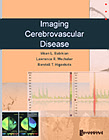I. Imaging Cerebrovascular Anatomy 1. Ultrasound 2. Magnetic
Resonance Angiography 3. Computerized Tomographic Angiography 4.
Catheter Angiography II. Imaging Cerebrovascular Physiology 1.
Xenon ?CBF ?Obrist 2. Positron Emission Tomography 3. SPECT
4. Xenon Computerized 5. Magnetic Resonance Imaging III. Imaging
Ischemic Cerebrovascular Disease 1. Acute Cerebral Infarction 2.
Subacute and Chronic Cerebral Infarction 3. Venous Thrombosis 4.
Rehabilitation IV. Imaging Hemorrhagic Cerebrovascular Disease
1. Hemorrhagic Brain Infarction 2. Parenchymal, Epidural and
Subdural Hemorrhage, AVM's 3. Subarachnoid Hemorrhage V. Recent
Developments 1. Interventional Treatments in Ischemic Disease
(Angioplasty, Stenting, etc) 2. Interventional Treatments for
AVM's Aneurysms 3. Imaging as a Surrogate Endpoint in Clinical
Trials 4. New Techniques in Ultrasound (Power, contrast, duplex,
thrombolysis) 5. New Techniques in MRI and CT Imaging
Author Information
By Viken L. Babikian, MD, Professor of Neurology, Boston
University School of Medicine, Boston; Associate Visiting
Neurologist, Boston University Medical Center, Boston; Associate
Chief of Neurology, Boston Veterans Affairs Medical Center;
Lawrence R. Wechsler, MD, Professor of Neurology, University of
Pittsburgh School of Medicine, Pittsburgh; Director, Stroke
Institute, University of Pittsburgh Medical Center, Pittsburgh,
PA; and Randall T. Higashida, MD, Professor of Radiology and
Neurosurgery, University of California, San Francisco, School of
Medicine, San Francisco, CA


